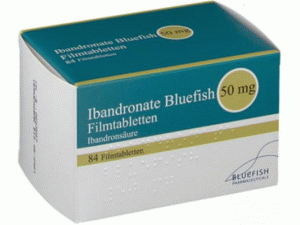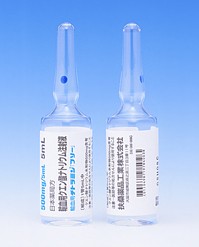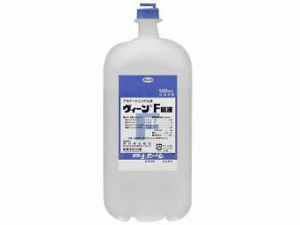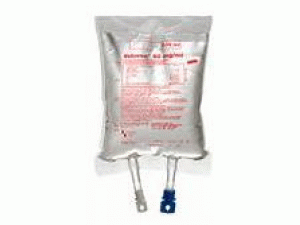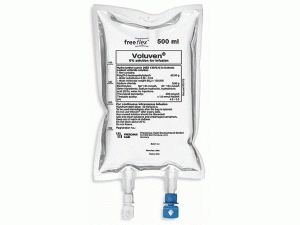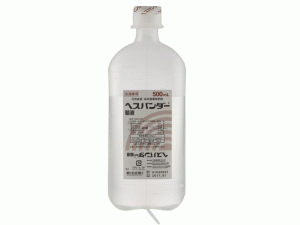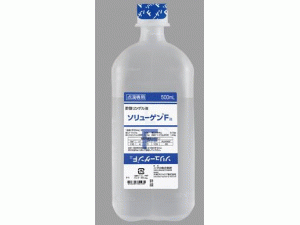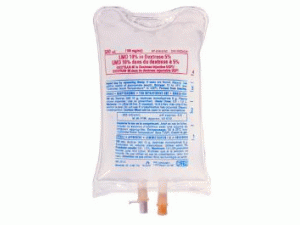阿法依泊汀_PROCRIT_阿法依泊汀注射剂EPOETIN ALFA说明书
[caption id="attachment_36232" align="alignleft" width="300"]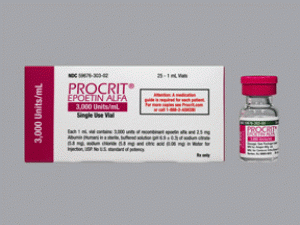 PROCRIT 3000U/ML 1ML SDV(EPOETIN ALFA 阿法依泊汀注射剂)[/caption]
药店国别:
产地国家:美国
处 方 药:是
所属类别:30000单位/毫升 1毫升/瓶 6瓶/盒
包装规格:30000单位/毫升 1毫升/瓶 6瓶/盒
计价单位:盒
生产厂家中文参考译名:强生药品
生产厂家英文名:JANSSEN PRODUCTS LP
原产地英文商品名:PROCRIT 3000U/ML 1ML SDV 6/PAC
原产地英文药品名:EPOETIN ALFA
中文参考商品译名:PROCRIT 30000单位/毫升 1毫升/瓶 6瓶/盒
中文参考药品译名:阿法依泊汀
简介:
部份中文阿法依泊汀处方资料(仅供参考)
英文药名:EPOETIN ALFA
商标名称:PROCRIT
中文药名:阿法依泊汀
药品简介
别名:阿法依泊汀,促血红细胞生长素,红细胞生成素,重组人红细胞生成素
外文名:Erythropoetin,Erythropoietin,r-HuEPO,RecombinantHumanErythropoietin,Epoetinalfa
用法用量:
静脉注射开始应用较低剂量50~100IU/kg,每周3次,如果在4周内,网状红细胞计数、血细胞比容和血红蛋白水平未见明显增加,本品的剂量可递增,如果在任何2周中血细胞比容的增加大于4%以上,本品的剂量应减少,建议以血细胞比容达30%~33%或血红蛋白水平达100~120g/L为指标,调节维持剂量,同时应个别测定最佳血细胞比容的水平。接受长期血液透析的患者,通常在每一次透析过程结束时给予本品。皮下给药剂量与静注相同。腹膜内给药剂量等于或大于静注剂量。
临床意义:
1.肾性贫血患者EPO水平较低,在进行治疗过程中,往往通过注射EPO来提高体内EPO水平进行治疗,从而帮助病人增加红细胞数量,此时EPO水平有所上升。
2.其他贫血如缺铁性贫血、巨细胞性贫血患者EPO水平不降低,但也可以使用EPO治疗,此时浓度也会有所升高。
3.再生障碍性贫血和骨髓造血功能不全患者EPO水平升高。
Procrit(Erythropoietin)
IMPORTANT SAFETY INFORMATION
WARNINGS: ESAs INCREASE THE RISK OF DEATH, MYOCARDIAL INFARCTION, STROKE, VENOUS THROMBOEMBOLISM, THROMBOSIS OF VASCULAR ACCESS AND TUMOR PROGRESSION OR RECURRENCE
Chronic Kidney Disease:
In controlled trials, patients experienced greater risks for death, serious adverse cardiovascular reactions, and stroke when administered erythropoiesis-stimulating agents (ESAs) to target a hemoglobin level of greater than 11 g/dL.
No trial has identified a hemoglobin target level, ESA dose, or dosing strategy that does not increase these risks.
Use the lowest PROCRIT® dose sufficient to reduce the need for red blood cell (RBC) transfusions.
Cancer:
ESAs shortened overall survival and/or increased the risk of tumor progression or recurrence in clinical studies of patients with breast, non-small cell lung, head and neck, lymphoid, and cervical cancers.
To decrease these risks, as well as the risk of serious cardiovascular and thromboembolic reactions, use the lowest dose needed to avoid RBC transfusions.
Use ESAs only for anemia from myelosuppressive chemotherapy.
ESAs are not indicated for patients receiving myelosuppressive chemotherapy when the anticipated outcome is cure.
Discontinue following the completion of a chemotherapy course.
Perisurgery:
Due to increased risk of deep venous thrombosis (DVT), DVT prophylaxis is recommended.
(See WARNINGS AND PRECAUTIONS: Increased Mortality, Myocardial Infarction, Stroke, and Thromboembolism, and WARNINGS AND PRECAUTIONS: Increased Mortality and/or Increased Risk of Tumor Progression or Recurrence in Patients With Cancer, INDICATIONS AND USAGE,and DOSAGE AND ADMINISTRATION.)
Contraindications
PROCRIT® is contraindicated in patients with:
Uncontrolled hypertension
Pure red cell aplasia (PRCA) that begins after treatment with PROCRIT® or other erythropoietin protein drugs
Serious allergic reactions to PROCRIT®
PROCRIT® from multiple-dose vials contains benzyl alcohol and is contraindicated in:
Neonates, infants, pregnant women, and lactating women. When therapy with PROCRIT® is needed in these patient populations, use single-dose vials; do not admix with bacteriostatic saline containing benzyl alcohol.
Additional Important Safety Information
Increased Mortality, Myocardial Infarction, Stroke, and Thromboembolism
In controlled clinical trials of patients with CKD comparing higher hemoglobin targets (13 - 14 g/dL) to lower targets (9 - 11.3 g/dL), PROCRIT® and other ESAs increased the risk of death, myocardial infarction, stroke, congestive heart failure, thrombosis of hemodialysis vascular access, and other thromboembolic events in the higher target groups.
Using ESAs to target a hemoglobin level of greater than 11 g/dL increases the risk of serious adverse cardiovascular reactions and has not been shown to provide additional benefit. Use caution in patients with coexistent cardiovascular disease and stroke. Patients with CKD and an insufficient hemoglobin response to ESA therapy may be at even greater risk for cardiovascular reactions and mortality than other patients. A rate of hemoglobin rise of greater than 1 g/dL over 2 weeks may contribute to these risks.
In controlled clinical trials of patients with cancer, PROCRIT® and other ESAs increased the risks for death and serious adverse cardiovascular reactions. These adverse reactions included myocardial infarction and stroke.
In controlled clinical trials, ESAs increased the risk of death in patients undergoing coronary artery bypass graft surgery (CABG) and the risk of deep venous thrombosis (DVT) in patients undergoing orthopedic procedures.
Increased Mortality and/or Increased Risk of Tumor Progression or Recurrence in Patients With Cancer
ESAs resulted in decreased locoregional control/progression-free survival (PFS) and/or overall survival (OS). Adverse effects on PFS and/or OS were observed in studies of patients receiving chemotherapy for breast cancer, lymphoid malignancy, and cervical cancer; in patients with advanced head and neck cancer receiving radiation therapy; and in patients with non-small cell lung cancer or various malignancies who were not receiving chemotherapy or radiotherapy.
Hypertension
PROCRIT® is contraindicated in patients with uncontrolled hypertension. Following initiation and titration of PROCRIT®, approximately 25% of patients on dialysis required initiation of or increases in antihypertensive therapy; hypertensive encephalopathy and seizures have been reported in patients with CKD receiving PROCRIT®.
Appropriately control hypertension prior to initiation of and during treatment with PROCRIT®. Reduce or withhold PROCRIT® if blood pressure becomes difficult to control. Advise patients of the importance of compliance with antihypertensive therapy and dietary restrictions.
Seizures
PROCRIT® increases the risk of seizures in patients with CKD. During the first several months following initiation of PROCRIT®, monitor patients closely for premonitory neurologic symptoms. Advise patients to contact their healthcare practitioner for new-onset seizures, premonitory symptoms or change in seizure frequency.
Lack or Loss of Hemoglobin Response to PROCRIT®
For lack or loss of hemoglobin response to PROCRIT®, initiate a search for causative factors (e.g., iron deficiency, infection, inflammation, bleeding). If typical causes of lack or loss of hemoglobin response are excluded, eva luate for PRCA. In the absence of PRCA, follow dosing recommendations for management of patients with an insufficient hemoglobin response to PROCRIT® therapy.
Pure Red Cell Aplasia
Cases of PRCA and of severe anemia, with or without other cytopenias that arise following the development of neutralizing antibodies to erythropoietin have been reported in patients treated with PROCRIT®. This has been reported predominantly in patients with CKD receiving ESAs by subcutaneous administration. PRCA has also been reported in patients receiving ESAs for anemia related to hepatitis C treatment (an indication for which PROCRIT® is not approved).
If severe anemia and low reticulocyte count develop during treatment with PROCRIT®,withhold PROCRIT® and eva luate patients for neutralizing antibodies to erythropoietin.Contact Janssen Products, LP at 1-800-JANSSEN (1-800-526-7736) to perform assays for binding and neutralizing antibodies. Permanently discontinue PROCRIT® in patients who develop PRCA following treatment with PROCRIT® or other erythropoietin protein drugs. Do not switch patients to other ESAs.
Serious Allergic Reactions
Serious allergic reactions, including anaphylactic reactions, angioedema, bronchospasm, skin rash, and urticaria may occur with PROCRIT®. Immediately and permanently discontinue PROCRIT® and administer appropriate therapy if a serious allergic or anaphylactic reaction occurs.
Severe Cutaneous Reactions
Blistering and skin exfoliation reactions, including Erythema multiforme and Stevens-Johnson Syndrome (SJS)/Toxic Epidermal Necrolysis (TEN), have been reported in patients treated with ESAs (including PROCRIT®) in the postmarketing setting. Discontinue PROCRIT® therapy immediately if a severe cutaneous reaction, such as SJS/TEN, is suspected.
Risk of Serious Adverse Reactions Due to Benzyl Alcohol Preservative
PROCRIT® from multiple-dose vials contains benzyl alcohol and is contraindicated for use in neonates, infants, pregnant women, and lactating women. In addition, do not mix PROCRIT® with bacteriostatic saline (which also contains benzyl alcohol) when administering PROCRIT® to these patient populations.
Serious and fatal reactions, including "gasping syndrome," can occur in neonates and infants treated with benzyl alcohol–preserved drugs, including PROCRIT® multiple-dose vials. The "gasping syndrome" is characterized by central nervous system depression, metabolic acidosis, and gasping respirations. There is a potential for similar risks to fetuses and infants exposed to benzyl alcohol in utero or in breast-fed milk, respectively. PROCRIT® multiple-dose vials contain 11 mg of benzyl alcohol per mL. The minimum amount of benzyl alcohol at which serious adverse reactions may occur is not known.
Risk of Infectious Diseases Due to Albumin (Human) Content
PROCRIT® contains albumin, a derivative of human blood. Based on effective donor screening and product manufacturing processes, it carries an extremely remote risk for transmission of viral diseases. A theoretical risk for transmission of Creutzfeldt-Jakob disease (CJD) also is considered extremely remote. No cases of transmission of viral diseases or CJD have ever been identified for albumin.
Dialysis Management
Patients may require adjustments in their dialysis prescriptions after initiation of PROCRIT®.Patients receiving PROCRIT® may require increased anticoagulation with heparin to prevent clotting of the extracorporeal circuit during hemodialysis.
Anemia in Patients with Chronic Kidney Disease
In adult patients not on dialysis:
Consider initiating PROCRIT® treatment only when the hemoglobin level is less than 10 g/dL and:
The patient’s rate of hemoglobin decline indicates the likelihood of requiring a RBC transfusion and
Reducing the risk of alloimmunization and/or other RBC transfusion-related risks is a goal.
If the hemoglobin level exceeds 10 g/dL, reduce or interrupt the dose of PROCRIT®, and use the lowest dose of PROCRIT® sufficient to reduce the need for RBC transfusions.
In adult patients on dialysis:
Initiate PROCRIT® treatment only when the hemoglobin level is less than 10 g/dL.
If the hemoglobin level approaches or exceeds 11 g/dL, reduce or interrupt the dose of PROCRIT®
In pediatric patients:
Initiate PROCRIT® treatment only when the hemoglobin level is less than 10 g/dL.
If the hemoglobin level approaches or exceeds 12 g/dL, reduce or interrupt the dose of PROCRIT®
When initiating or adjusting therapy, monitor hemoglobin levels at least weekly until stable then monitor at least monthly. When adjusting therapy consider hemoglobin rate of rise, rate of decline, ESA responsiveness and hemoglobin variability. A single hemoglobin excursion may not require a dosing change.
Do not increase the dose more frequently than once every 4 weeks. Decreases in dose can occur more frequently. Avoid frequent dose adjustments.
If the hemoglobin rises rapidly (e.g. more than 1 g/dL in any 2-week period), reduce the dose of PROCRIT® by 25% or more as needed to reduce rapid responses.
For patients who do not respond adequately, if the hemoglobin has not increased by more than 1 g/dL after 4 weeks of therapy, increase the dose by 25%.
For patients who do not respond adequately over a 12-week escalation period, increasing the PROCRIT® dose further is unlikely to improve response and may increase risks. Use the lowest dose that will maintain a hemoglobin level sufficient to reduce the need for RBC transfusions. eva luate other causes of anemia. Discontinue PROCRIT® if responsiveness does not improve.
Adverse reactions in ≥5% of PROCRIT®-treated adult patients not on dialysis in clinical studies were hypertension and arthralgia.
Adverse reactions in ≥5% of PROCRIT®-treated patients on dialysis were hypertension, arthralgia, muscle spasm, pyrexia, dizziness, medical device malfunction, vascular occlusion and upper respiratory tract infection.
Anemia Due to Chemotherapy in Patients with Cancer
PROCRIT® is not indicated for use in patients with cancer receiving hormonal agents, biologic products, or radiotherapy, unless also receiving concomitant myelosuppressive chemotherapy.
PROCRIT® is not indicated for use in patients with cancer receiving myelosuppressive chemotherapy when the anticipated outcome is cure.
PROCRIT® is not indicated for use in patients with cancer receiving myelosuppressive chemotherapy in whom the anemia can be managed by transfusion.
Initiate PROCRIT® in patients on cancer chemotherapy only if the hemoglobin is less than 10 g/dL, and if there is a minimum of two additional months of planned chemotherapy.
Use the lowest dose of PROCRIT® necessary to avoid RBC transfusions.
Reduce dose by 25% if:
Hemoglobin increases greater than 1 g/dL in any 2-week period or
Hemoglobin reaches a level needed to avoid RBC transfusion.
Withhold dose if hemoglobin exceeds a level needed to avoid RBC transfusion. Reinitiate at a dose 25% below the previous dose when hemoglobin approaches a level where RBC transfusions may be required.
Adverse reactions in ≥5% of PROCRIT®-treated patients in clinical studies were nausea, vomiting, myalgia, arthralgia, stomatitis, cough, weight decrease, leukopenia, bone pain, rash, hyperglycemia, insomnia, headache, depression, dysphagia, hypokalemia, and thrombosis.
Surgery/Perisurgery
PROCRIT® is not indicated for use in patients scheduled for surgery who are willing to donate autologous blood.
PROCRIT® is not indicated for use in patients undergoing cardiac or vascular surgery.
Deep venous thrombosis prophylaxis is recommended during PROCRIT® therapy.
Adverse reactions in ≥5% of PROCRIT®-treated patients in clinical studies were nausea, vomiting, pruritus, headache, injection site pain, chills, deep vein thrombosis, cough, and hypertension.
Anemia Due to Zidovudine in Patients with HIV infection
Withhold PROCRIT® if hemoglobin exceeds 12 g/dL. Resume therapy at a dose 25% below the previous dose when hemoglobin declines to less than 11 g/dL.
Discontinue PROCRIT® if an increase in hemoglobin is not achieved at a dose of 300 Units/kg for 8 weeks.
Adverse reactions in ≥5% of PROCRIT®-treated patients in clinical studies were pyrexia, cough, rash, and injection site irritation.
PROCRIT 3000U/ML 1ML SDV(EPOETIN ALFA 阿法依泊汀注射剂)[/caption]
药店国别:
产地国家:美国
处 方 药:是
所属类别:30000单位/毫升 1毫升/瓶 6瓶/盒
包装规格:30000单位/毫升 1毫升/瓶 6瓶/盒
计价单位:盒
生产厂家中文参考译名:强生药品
生产厂家英文名:JANSSEN PRODUCTS LP
原产地英文商品名:PROCRIT 3000U/ML 1ML SDV 6/PAC
原产地英文药品名:EPOETIN ALFA
中文参考商品译名:PROCRIT 30000单位/毫升 1毫升/瓶 6瓶/盒
中文参考药品译名:阿法依泊汀
简介:
部份中文阿法依泊汀处方资料(仅供参考)
英文药名:EPOETIN ALFA
商标名称:PROCRIT
中文药名:阿法依泊汀
药品简介
别名:阿法依泊汀,促血红细胞生长素,红细胞生成素,重组人红细胞生成素
外文名:Erythropoetin,Erythropoietin,r-HuEPO,RecombinantHumanErythropoietin,Epoetinalfa
用法用量:
静脉注射开始应用较低剂量50~100IU/kg,每周3次,如果在4周内,网状红细胞计数、血细胞比容和血红蛋白水平未见明显增加,本品的剂量可递增,如果在任何2周中血细胞比容的增加大于4%以上,本品的剂量应减少,建议以血细胞比容达30%~33%或血红蛋白水平达100~120g/L为指标,调节维持剂量,同时应个别测定最佳血细胞比容的水平。接受长期血液透析的患者,通常在每一次透析过程结束时给予本品。皮下给药剂量与静注相同。腹膜内给药剂量等于或大于静注剂量。
临床意义:
1.肾性贫血患者EPO水平较低,在进行治疗过程中,往往通过注射EPO来提高体内EPO水平进行治疗,从而帮助病人增加红细胞数量,此时EPO水平有所上升。
2.其他贫血如缺铁性贫血、巨细胞性贫血患者EPO水平不降低,但也可以使用EPO治疗,此时浓度也会有所升高。
3.再生障碍性贫血和骨髓造血功能不全患者EPO水平升高。
Procrit(Erythropoietin)
IMPORTANT SAFETY INFORMATION
WARNINGS: ESAs INCREASE THE RISK OF DEATH, MYOCARDIAL INFARCTION, STROKE, VENOUS THROMBOEMBOLISM, THROMBOSIS OF VASCULAR ACCESS AND TUMOR PROGRESSION OR RECURRENCE
Chronic Kidney Disease:
In controlled trials, patients experienced greater risks for death, serious adverse cardiovascular reactions, and stroke when administered erythropoiesis-stimulating agents (ESAs) to target a hemoglobin level of greater than 11 g/dL.
No trial has identified a hemoglobin target level, ESA dose, or dosing strategy that does not increase these risks.
Use the lowest PROCRIT® dose sufficient to reduce the need for red blood cell (RBC) transfusions.
Cancer:
ESAs shortened overall survival and/or increased the risk of tumor progression or recurrence in clinical studies of patients with breast, non-small cell lung, head and neck, lymphoid, and cervical cancers.
To decrease these risks, as well as the risk of serious cardiovascular and thromboembolic reactions, use the lowest dose needed to avoid RBC transfusions.
Use ESAs only for anemia from myelosuppressive chemotherapy.
ESAs are not indicated for patients receiving myelosuppressive chemotherapy when the anticipated outcome is cure.
Discontinue following the completion of a chemotherapy course.
Perisurgery:
Due to increased risk of deep venous thrombosis (DVT), DVT prophylaxis is recommended.
(See WARNINGS AND PRECAUTIONS: Increased Mortality, Myocardial Infarction, Stroke, and Thromboembolism, and WARNINGS AND PRECAUTIONS: Increased Mortality and/or Increased Risk of Tumor Progression or Recurrence in Patients With Cancer, INDICATIONS AND USAGE,and DOSAGE AND ADMINISTRATION.)
Contraindications
PROCRIT® is contraindicated in patients with:
Uncontrolled hypertension
Pure red cell aplasia (PRCA) that begins after treatment with PROCRIT® or other erythropoietin protein drugs
Serious allergic reactions to PROCRIT®
PROCRIT® from multiple-dose vials contains benzyl alcohol and is contraindicated in:
Neonates, infants, pregnant women, and lactating women. When therapy with PROCRIT® is needed in these patient populations, use single-dose vials; do not admix with bacteriostatic saline containing benzyl alcohol.
Additional Important Safety Information
Increased Mortality, Myocardial Infarction, Stroke, and Thromboembolism
In controlled clinical trials of patients with CKD comparing higher hemoglobin targets (13 - 14 g/dL) to lower targets (9 - 11.3 g/dL), PROCRIT® and other ESAs increased the risk of death, myocardial infarction, stroke, congestive heart failure, thrombosis of hemodialysis vascular access, and other thromboembolic events in the higher target groups.
Using ESAs to target a hemoglobin level of greater than 11 g/dL increases the risk of serious adverse cardiovascular reactions and has not been shown to provide additional benefit. Use caution in patients with coexistent cardiovascular disease and stroke. Patients with CKD and an insufficient hemoglobin response to ESA therapy may be at even greater risk for cardiovascular reactions and mortality than other patients. A rate of hemoglobin rise of greater than 1 g/dL over 2 weeks may contribute to these risks.
In controlled clinical trials of patients with cancer, PROCRIT® and other ESAs increased the risks for death and serious adverse cardiovascular reactions. These adverse reactions included myocardial infarction and stroke.
In controlled clinical trials, ESAs increased the risk of death in patients undergoing coronary artery bypass graft surgery (CABG) and the risk of deep venous thrombosis (DVT) in patients undergoing orthopedic procedures.
Increased Mortality and/or Increased Risk of Tumor Progression or Recurrence in Patients With Cancer
ESAs resulted in decreased locoregional control/progression-free survival (PFS) and/or overall survival (OS). Adverse effects on PFS and/or OS were observed in studies of patients receiving chemotherapy for breast cancer, lymphoid malignancy, and cervical cancer; in patients with advanced head and neck cancer receiving radiation therapy; and in patients with non-small cell lung cancer or various malignancies who were not receiving chemotherapy or radiotherapy.
Hypertension
PROCRIT® is contraindicated in patients with uncontrolled hypertension. Following initiation and titration of PROCRIT®, approximately 25% of patients on dialysis required initiation of or increases in antihypertensive therapy; hypertensive encephalopathy and seizures have been reported in patients with CKD receiving PROCRIT®.
Appropriately control hypertension prior to initiation of and during treatment with PROCRIT®. Reduce or withhold PROCRIT® if blood pressure becomes difficult to control. Advise patients of the importance of compliance with antihypertensive therapy and dietary restrictions.
Seizures
PROCRIT® increases the risk of seizures in patients with CKD. During the first several months following initiation of PROCRIT®, monitor patients closely for premonitory neurologic symptoms. Advise patients to contact their healthcare practitioner for new-onset seizures, premonitory symptoms or change in seizure frequency.
Lack or Loss of Hemoglobin Response to PROCRIT®
For lack or loss of hemoglobin response to PROCRIT®, initiate a search for causative factors (e.g., iron deficiency, infection, inflammation, bleeding). If typical causes of lack or loss of hemoglobin response are excluded, eva luate for PRCA. In the absence of PRCA, follow dosing recommendations for management of patients with an insufficient hemoglobin response to PROCRIT® therapy.
Pure Red Cell Aplasia
Cases of PRCA and of severe anemia, with or without other cytopenias that arise following the development of neutralizing antibodies to erythropoietin have been reported in patients treated with PROCRIT®. This has been reported predominantly in patients with CKD receiving ESAs by subcutaneous administration. PRCA has also been reported in patients receiving ESAs for anemia related to hepatitis C treatment (an indication for which PROCRIT® is not approved).
If severe anemia and low reticulocyte count develop during treatment with PROCRIT®,withhold PROCRIT® and eva luate patients for neutralizing antibodies to erythropoietin.Contact Janssen Products, LP at 1-800-JANSSEN (1-800-526-7736) to perform assays for binding and neutralizing antibodies. Permanently discontinue PROCRIT® in patients who develop PRCA following treatment with PROCRIT® or other erythropoietin protein drugs. Do not switch patients to other ESAs.
Serious Allergic Reactions
Serious allergic reactions, including anaphylactic reactions, angioedema, bronchospasm, skin rash, and urticaria may occur with PROCRIT®. Immediately and permanently discontinue PROCRIT® and administer appropriate therapy if a serious allergic or anaphylactic reaction occurs.
Severe Cutaneous Reactions
Blistering and skin exfoliation reactions, including Erythema multiforme and Stevens-Johnson Syndrome (SJS)/Toxic Epidermal Necrolysis (TEN), have been reported in patients treated with ESAs (including PROCRIT®) in the postmarketing setting. Discontinue PROCRIT® therapy immediately if a severe cutaneous reaction, such as SJS/TEN, is suspected.
Risk of Serious Adverse Reactions Due to Benzyl Alcohol Preservative
PROCRIT® from multiple-dose vials contains benzyl alcohol and is contraindicated for use in neonates, infants, pregnant women, and lactating women. In addition, do not mix PROCRIT® with bacteriostatic saline (which also contains benzyl alcohol) when administering PROCRIT® to these patient populations.
Serious and fatal reactions, including "gasping syndrome," can occur in neonates and infants treated with benzyl alcohol–preserved drugs, including PROCRIT® multiple-dose vials. The "gasping syndrome" is characterized by central nervous system depression, metabolic acidosis, and gasping respirations. There is a potential for similar risks to fetuses and infants exposed to benzyl alcohol in utero or in breast-fed milk, respectively. PROCRIT® multiple-dose vials contain 11 mg of benzyl alcohol per mL. The minimum amount of benzyl alcohol at which serious adverse reactions may occur is not known.
Risk of Infectious Diseases Due to Albumin (Human) Content
PROCRIT® contains albumin, a derivative of human blood. Based on effective donor screening and product manufacturing processes, it carries an extremely remote risk for transmission of viral diseases. A theoretical risk for transmission of Creutzfeldt-Jakob disease (CJD) also is considered extremely remote. No cases of transmission of viral diseases or CJD have ever been identified for albumin.
Dialysis Management
Patients may require adjustments in their dialysis prescriptions after initiation of PROCRIT®.Patients receiving PROCRIT® may require increased anticoagulation with heparin to prevent clotting of the extracorporeal circuit during hemodialysis.
Anemia in Patients with Chronic Kidney Disease
In adult patients not on dialysis:
Consider initiating PROCRIT® treatment only when the hemoglobin level is less than 10 g/dL and:
The patient’s rate of hemoglobin decline indicates the likelihood of requiring a RBC transfusion and
Reducing the risk of alloimmunization and/or other RBC transfusion-related risks is a goal.
If the hemoglobin level exceeds 10 g/dL, reduce or interrupt the dose of PROCRIT®, and use the lowest dose of PROCRIT® sufficient to reduce the need for RBC transfusions.
In adult patients on dialysis:
Initiate PROCRIT® treatment only when the hemoglobin level is less than 10 g/dL.
If the hemoglobin level approaches or exceeds 11 g/dL, reduce or interrupt the dose of PROCRIT®
In pediatric patients:
Initiate PROCRIT® treatment only when the hemoglobin level is less than 10 g/dL.
If the hemoglobin level approaches or exceeds 12 g/dL, reduce or interrupt the dose of PROCRIT®
When initiating or adjusting therapy, monitor hemoglobin levels at least weekly until stable then monitor at least monthly. When adjusting therapy consider hemoglobin rate of rise, rate of decline, ESA responsiveness and hemoglobin variability. A single hemoglobin excursion may not require a dosing change.
Do not increase the dose more frequently than once every 4 weeks. Decreases in dose can occur more frequently. Avoid frequent dose adjustments.
If the hemoglobin rises rapidly (e.g. more than 1 g/dL in any 2-week period), reduce the dose of PROCRIT® by 25% or more as needed to reduce rapid responses.
For patients who do not respond adequately, if the hemoglobin has not increased by more than 1 g/dL after 4 weeks of therapy, increase the dose by 25%.
For patients who do not respond adequately over a 12-week escalation period, increasing the PROCRIT® dose further is unlikely to improve response and may increase risks. Use the lowest dose that will maintain a hemoglobin level sufficient to reduce the need for RBC transfusions. eva luate other causes of anemia. Discontinue PROCRIT® if responsiveness does not improve.
Adverse reactions in ≥5% of PROCRIT®-treated adult patients not on dialysis in clinical studies were hypertension and arthralgia.
Adverse reactions in ≥5% of PROCRIT®-treated patients on dialysis were hypertension, arthralgia, muscle spasm, pyrexia, dizziness, medical device malfunction, vascular occlusion and upper respiratory tract infection.
Anemia Due to Chemotherapy in Patients with Cancer
PROCRIT® is not indicated for use in patients with cancer receiving hormonal agents, biologic products, or radiotherapy, unless also receiving concomitant myelosuppressive chemotherapy.
PROCRIT® is not indicated for use in patients with cancer receiving myelosuppressive chemotherapy when the anticipated outcome is cure.
PROCRIT® is not indicated for use in patients with cancer receiving myelosuppressive chemotherapy in whom the anemia can be managed by transfusion.
Initiate PROCRIT® in patients on cancer chemotherapy only if the hemoglobin is less than 10 g/dL, and if there is a minimum of two additional months of planned chemotherapy.
Use the lowest dose of PROCRIT® necessary to avoid RBC transfusions.
Reduce dose by 25% if:
Hemoglobin increases greater than 1 g/dL in any 2-week period or
Hemoglobin reaches a level needed to avoid RBC transfusion.
Withhold dose if hemoglobin exceeds a level needed to avoid RBC transfusion. Reinitiate at a dose 25% below the previous dose when hemoglobin approaches a level where RBC transfusions may be required.
Adverse reactions in ≥5% of PROCRIT®-treated patients in clinical studies were nausea, vomiting, myalgia, arthralgia, stomatitis, cough, weight decrease, leukopenia, bone pain, rash, hyperglycemia, insomnia, headache, depression, dysphagia, hypokalemia, and thrombosis.
Surgery/Perisurgery
PROCRIT® is not indicated for use in patients scheduled for surgery who are willing to donate autologous blood.
PROCRIT® is not indicated for use in patients undergoing cardiac or vascular surgery.
Deep venous thrombosis prophylaxis is recommended during PROCRIT® therapy.
Adverse reactions in ≥5% of PROCRIT®-treated patients in clinical studies were nausea, vomiting, pruritus, headache, injection site pain, chills, deep vein thrombosis, cough, and hypertension.
Anemia Due to Zidovudine in Patients with HIV infection
Withhold PROCRIT® if hemoglobin exceeds 12 g/dL. Resume therapy at a dose 25% below the previous dose when hemoglobin declines to less than 11 g/dL.
Discontinue PROCRIT® if an increase in hemoglobin is not achieved at a dose of 300 Units/kg for 8 weeks.
Adverse reactions in ≥5% of PROCRIT®-treated patients in clinical studies were pyrexia, cough, rash, and injection site irritation.
 PROCRIT 3000U/ML 1ML SDV(EPOETIN ALFA 阿法依泊汀注射剂)[/caption]
药店国别:
产地国家:美国
处 方 药:是
所属类别:30000单位/毫升 1毫升/瓶 6瓶/盒
包装规格:30000单位/毫升 1毫升/瓶 6瓶/盒
计价单位:盒
生产厂家中文参考译名:强生药品
生产厂家英文名:JANSSEN PRODUCTS LP
原产地英文商品名:PROCRIT 3000U/ML 1ML SDV 6/PAC
原产地英文药品名:EPOETIN ALFA
中文参考商品译名:PROCRIT 30000单位/毫升 1毫升/瓶 6瓶/盒
中文参考药品译名:阿法依泊汀
简介:
部份中文阿法依泊汀处方资料(仅供参考)
英文药名:EPOETIN ALFA
商标名称:PROCRIT
中文药名:阿法依泊汀
药品简介
别名:阿法依泊汀,促血红细胞生长素,红细胞生成素,重组人红细胞生成素
外文名:Erythropoetin,Erythropoietin,r-HuEPO,RecombinantHumanErythropoietin,Epoetinalfa
用法用量:
静脉注射开始应用较低剂量50~100IU/kg,每周3次,如果在4周内,网状红细胞计数、血细胞比容和血红蛋白水平未见明显增加,本品的剂量可递增,如果在任何2周中血细胞比容的增加大于4%以上,本品的剂量应减少,建议以血细胞比容达30%~33%或血红蛋白水平达100~120g/L为指标,调节维持剂量,同时应个别测定最佳血细胞比容的水平。接受长期血液透析的患者,通常在每一次透析过程结束时给予本品。皮下给药剂量与静注相同。腹膜内给药剂量等于或大于静注剂量。
临床意义:
1.肾性贫血患者EPO水平较低,在进行治疗过程中,往往通过注射EPO来提高体内EPO水平进行治疗,从而帮助病人增加红细胞数量,此时EPO水平有所上升。
2.其他贫血如缺铁性贫血、巨细胞性贫血患者EPO水平不降低,但也可以使用EPO治疗,此时浓度也会有所升高。
3.再生障碍性贫血和骨髓造血功能不全患者EPO水平升高。
Procrit(Erythropoietin)
IMPORTANT SAFETY INFORMATION
WARNINGS: ESAs INCREASE THE RISK OF DEATH, MYOCARDIAL INFARCTION, STROKE, VENOUS THROMBOEMBOLISM, THROMBOSIS OF VASCULAR ACCESS AND TUMOR PROGRESSION OR RECURRENCE
Chronic Kidney Disease:
In controlled trials, patients experienced greater risks for death, serious adverse cardiovascular reactions, and stroke when administered erythropoiesis-stimulating agents (ESAs) to target a hemoglobin level of greater than 11 g/dL.
No trial has identified a hemoglobin target level, ESA dose, or dosing strategy that does not increase these risks.
Use the lowest PROCRIT® dose sufficient to reduce the need for red blood cell (RBC) transfusions.
Cancer:
ESAs shortened overall survival and/or increased the risk of tumor progression or recurrence in clinical studies of patients with breast, non-small cell lung, head and neck, lymphoid, and cervical cancers.
To decrease these risks, as well as the risk of serious cardiovascular and thromboembolic reactions, use the lowest dose needed to avoid RBC transfusions.
Use ESAs only for anemia from myelosuppressive chemotherapy.
ESAs are not indicated for patients receiving myelosuppressive chemotherapy when the anticipated outcome is cure.
Discontinue following the completion of a chemotherapy course.
Perisurgery:
Due to increased risk of deep venous thrombosis (DVT), DVT prophylaxis is recommended.
(See WARNINGS AND PRECAUTIONS: Increased Mortality, Myocardial Infarction, Stroke, and Thromboembolism, and WARNINGS AND PRECAUTIONS: Increased Mortality and/or Increased Risk of Tumor Progression or Recurrence in Patients With Cancer, INDICATIONS AND USAGE,and DOSAGE AND ADMINISTRATION.)
Contraindications
PROCRIT® is contraindicated in patients with:
Uncontrolled hypertension
Pure red cell aplasia (PRCA) that begins after treatment with PROCRIT® or other erythropoietin protein drugs
Serious allergic reactions to PROCRIT®
PROCRIT® from multiple-dose vials contains benzyl alcohol and is contraindicated in:
Neonates, infants, pregnant women, and lactating women. When therapy with PROCRIT® is needed in these patient populations, use single-dose vials; do not admix with bacteriostatic saline containing benzyl alcohol.
Additional Important Safety Information
Increased Mortality, Myocardial Infarction, Stroke, and Thromboembolism
In controlled clinical trials of patients with CKD comparing higher hemoglobin targets (13 - 14 g/dL) to lower targets (9 - 11.3 g/dL), PROCRIT® and other ESAs increased the risk of death, myocardial infarction, stroke, congestive heart failure, thrombosis of hemodialysis vascular access, and other thromboembolic events in the higher target groups.
Using ESAs to target a hemoglobin level of greater than 11 g/dL increases the risk of serious adverse cardiovascular reactions and has not been shown to provide additional benefit. Use caution in patients with coexistent cardiovascular disease and stroke. Patients with CKD and an insufficient hemoglobin response to ESA therapy may be at even greater risk for cardiovascular reactions and mortality than other patients. A rate of hemoglobin rise of greater than 1 g/dL over 2 weeks may contribute to these risks.
In controlled clinical trials of patients with cancer, PROCRIT® and other ESAs increased the risks for death and serious adverse cardiovascular reactions. These adverse reactions included myocardial infarction and stroke.
In controlled clinical trials, ESAs increased the risk of death in patients undergoing coronary artery bypass graft surgery (CABG) and the risk of deep venous thrombosis (DVT) in patients undergoing orthopedic procedures.
Increased Mortality and/or Increased Risk of Tumor Progression or Recurrence in Patients With Cancer
ESAs resulted in decreased locoregional control/progression-free survival (PFS) and/or overall survival (OS). Adverse effects on PFS and/or OS were observed in studies of patients receiving chemotherapy for breast cancer, lymphoid malignancy, and cervical cancer; in patients with advanced head and neck cancer receiving radiation therapy; and in patients with non-small cell lung cancer or various malignancies who were not receiving chemotherapy or radiotherapy.
Hypertension
PROCRIT® is contraindicated in patients with uncontrolled hypertension. Following initiation and titration of PROCRIT®, approximately 25% of patients on dialysis required initiation of or increases in antihypertensive therapy; hypertensive encephalopathy and seizures have been reported in patients with CKD receiving PROCRIT®.
Appropriately control hypertension prior to initiation of and during treatment with PROCRIT®. Reduce or withhold PROCRIT® if blood pressure becomes difficult to control. Advise patients of the importance of compliance with antihypertensive therapy and dietary restrictions.
Seizures
PROCRIT® increases the risk of seizures in patients with CKD. During the first several months following initiation of PROCRIT®, monitor patients closely for premonitory neurologic symptoms. Advise patients to contact their healthcare practitioner for new-onset seizures, premonitory symptoms or change in seizure frequency.
Lack or Loss of Hemoglobin Response to PROCRIT®
For lack or loss of hemoglobin response to PROCRIT®, initiate a search for causative factors (e.g., iron deficiency, infection, inflammation, bleeding). If typical causes of lack or loss of hemoglobin response are excluded, eva luate for PRCA. In the absence of PRCA, follow dosing recommendations for management of patients with an insufficient hemoglobin response to PROCRIT® therapy.
Pure Red Cell Aplasia
Cases of PRCA and of severe anemia, with or without other cytopenias that arise following the development of neutralizing antibodies to erythropoietin have been reported in patients treated with PROCRIT®. This has been reported predominantly in patients with CKD receiving ESAs by subcutaneous administration. PRCA has also been reported in patients receiving ESAs for anemia related to hepatitis C treatment (an indication for which PROCRIT® is not approved).
If severe anemia and low reticulocyte count develop during treatment with PROCRIT®,withhold PROCRIT® and eva luate patients for neutralizing antibodies to erythropoietin.Contact Janssen Products, LP at 1-800-JANSSEN (1-800-526-7736) to perform assays for binding and neutralizing antibodies. Permanently discontinue PROCRIT® in patients who develop PRCA following treatment with PROCRIT® or other erythropoietin protein drugs. Do not switch patients to other ESAs.
Serious Allergic Reactions
Serious allergic reactions, including anaphylactic reactions, angioedema, bronchospasm, skin rash, and urticaria may occur with PROCRIT®. Immediately and permanently discontinue PROCRIT® and administer appropriate therapy if a serious allergic or anaphylactic reaction occurs.
Severe Cutaneous Reactions
Blistering and skin exfoliation reactions, including Erythema multiforme and Stevens-Johnson Syndrome (SJS)/Toxic Epidermal Necrolysis (TEN), have been reported in patients treated with ESAs (including PROCRIT®) in the postmarketing setting. Discontinue PROCRIT® therapy immediately if a severe cutaneous reaction, such as SJS/TEN, is suspected.
Risk of Serious Adverse Reactions Due to Benzyl Alcohol Preservative
PROCRIT® from multiple-dose vials contains benzyl alcohol and is contraindicated for use in neonates, infants, pregnant women, and lactating women. In addition, do not mix PROCRIT® with bacteriostatic saline (which also contains benzyl alcohol) when administering PROCRIT® to these patient populations.
Serious and fatal reactions, including "gasping syndrome," can occur in neonates and infants treated with benzyl alcohol–preserved drugs, including PROCRIT® multiple-dose vials. The "gasping syndrome" is characterized by central nervous system depression, metabolic acidosis, and gasping respirations. There is a potential for similar risks to fetuses and infants exposed to benzyl alcohol in utero or in breast-fed milk, respectively. PROCRIT® multiple-dose vials contain 11 mg of benzyl alcohol per mL. The minimum amount of benzyl alcohol at which serious adverse reactions may occur is not known.
Risk of Infectious Diseases Due to Albumin (Human) Content
PROCRIT® contains albumin, a derivative of human blood. Based on effective donor screening and product manufacturing processes, it carries an extremely remote risk for transmission of viral diseases. A theoretical risk for transmission of Creutzfeldt-Jakob disease (CJD) also is considered extremely remote. No cases of transmission of viral diseases or CJD have ever been identified for albumin.
Dialysis Management
Patients may require adjustments in their dialysis prescriptions after initiation of PROCRIT®.Patients receiving PROCRIT® may require increased anticoagulation with heparin to prevent clotting of the extracorporeal circuit during hemodialysis.
Anemia in Patients with Chronic Kidney Disease
In adult patients not on dialysis:
Consider initiating PROCRIT® treatment only when the hemoglobin level is less than 10 g/dL and:
The patient’s rate of hemoglobin decline indicates the likelihood of requiring a RBC transfusion and
Reducing the risk of alloimmunization and/or other RBC transfusion-related risks is a goal.
If the hemoglobin level exceeds 10 g/dL, reduce or interrupt the dose of PROCRIT®, and use the lowest dose of PROCRIT® sufficient to reduce the need for RBC transfusions.
In adult patients on dialysis:
Initiate PROCRIT® treatment only when the hemoglobin level is less than 10 g/dL.
If the hemoglobin level approaches or exceeds 11 g/dL, reduce or interrupt the dose of PROCRIT®
In pediatric patients:
Initiate PROCRIT® treatment only when the hemoglobin level is less than 10 g/dL.
If the hemoglobin level approaches or exceeds 12 g/dL, reduce or interrupt the dose of PROCRIT®
When initiating or adjusting therapy, monitor hemoglobin levels at least weekly until stable then monitor at least monthly. When adjusting therapy consider hemoglobin rate of rise, rate of decline, ESA responsiveness and hemoglobin variability. A single hemoglobin excursion may not require a dosing change.
Do not increase the dose more frequently than once every 4 weeks. Decreases in dose can occur more frequently. Avoid frequent dose adjustments.
If the hemoglobin rises rapidly (e.g. more than 1 g/dL in any 2-week period), reduce the dose of PROCRIT® by 25% or more as needed to reduce rapid responses.
For patients who do not respond adequately, if the hemoglobin has not increased by more than 1 g/dL after 4 weeks of therapy, increase the dose by 25%.
For patients who do not respond adequately over a 12-week escalation period, increasing the PROCRIT® dose further is unlikely to improve response and may increase risks. Use the lowest dose that will maintain a hemoglobin level sufficient to reduce the need for RBC transfusions. eva luate other causes of anemia. Discontinue PROCRIT® if responsiveness does not improve.
Adverse reactions in ≥5% of PROCRIT®-treated adult patients not on dialysis in clinical studies were hypertension and arthralgia.
Adverse reactions in ≥5% of PROCRIT®-treated patients on dialysis were hypertension, arthralgia, muscle spasm, pyrexia, dizziness, medical device malfunction, vascular occlusion and upper respiratory tract infection.
Anemia Due to Chemotherapy in Patients with Cancer
PROCRIT® is not indicated for use in patients with cancer receiving hormonal agents, biologic products, or radiotherapy, unless also receiving concomitant myelosuppressive chemotherapy.
PROCRIT® is not indicated for use in patients with cancer receiving myelosuppressive chemotherapy when the anticipated outcome is cure.
PROCRIT® is not indicated for use in patients with cancer receiving myelosuppressive chemotherapy in whom the anemia can be managed by transfusion.
Initiate PROCRIT® in patients on cancer chemotherapy only if the hemoglobin is less than 10 g/dL, and if there is a minimum of two additional months of planned chemotherapy.
Use the lowest dose of PROCRIT® necessary to avoid RBC transfusions.
Reduce dose by 25% if:
Hemoglobin increases greater than 1 g/dL in any 2-week period or
Hemoglobin reaches a level needed to avoid RBC transfusion.
Withhold dose if hemoglobin exceeds a level needed to avoid RBC transfusion. Reinitiate at a dose 25% below the previous dose when hemoglobin approaches a level where RBC transfusions may be required.
Adverse reactions in ≥5% of PROCRIT®-treated patients in clinical studies were nausea, vomiting, myalgia, arthralgia, stomatitis, cough, weight decrease, leukopenia, bone pain, rash, hyperglycemia, insomnia, headache, depression, dysphagia, hypokalemia, and thrombosis.
Surgery/Perisurgery
PROCRIT® is not indicated for use in patients scheduled for surgery who are willing to donate autologous blood.
PROCRIT® is not indicated for use in patients undergoing cardiac or vascular surgery.
Deep venous thrombosis prophylaxis is recommended during PROCRIT® therapy.
Adverse reactions in ≥5% of PROCRIT®-treated patients in clinical studies were nausea, vomiting, pruritus, headache, injection site pain, chills, deep vein thrombosis, cough, and hypertension.
Anemia Due to Zidovudine in Patients with HIV infection
Withhold PROCRIT® if hemoglobin exceeds 12 g/dL. Resume therapy at a dose 25% below the previous dose when hemoglobin declines to less than 11 g/dL.
Discontinue PROCRIT® if an increase in hemoglobin is not achieved at a dose of 300 Units/kg for 8 weeks.
Adverse reactions in ≥5% of PROCRIT®-treated patients in clinical studies were pyrexia, cough, rash, and injection site irritation.
PROCRIT 3000U/ML 1ML SDV(EPOETIN ALFA 阿法依泊汀注射剂)[/caption]
药店国别:
产地国家:美国
处 方 药:是
所属类别:30000单位/毫升 1毫升/瓶 6瓶/盒
包装规格:30000单位/毫升 1毫升/瓶 6瓶/盒
计价单位:盒
生产厂家中文参考译名:强生药品
生产厂家英文名:JANSSEN PRODUCTS LP
原产地英文商品名:PROCRIT 3000U/ML 1ML SDV 6/PAC
原产地英文药品名:EPOETIN ALFA
中文参考商品译名:PROCRIT 30000单位/毫升 1毫升/瓶 6瓶/盒
中文参考药品译名:阿法依泊汀
简介:
部份中文阿法依泊汀处方资料(仅供参考)
英文药名:EPOETIN ALFA
商标名称:PROCRIT
中文药名:阿法依泊汀
药品简介
别名:阿法依泊汀,促血红细胞生长素,红细胞生成素,重组人红细胞生成素
外文名:Erythropoetin,Erythropoietin,r-HuEPO,RecombinantHumanErythropoietin,Epoetinalfa
用法用量:
静脉注射开始应用较低剂量50~100IU/kg,每周3次,如果在4周内,网状红细胞计数、血细胞比容和血红蛋白水平未见明显增加,本品的剂量可递增,如果在任何2周中血细胞比容的增加大于4%以上,本品的剂量应减少,建议以血细胞比容达30%~33%或血红蛋白水平达100~120g/L为指标,调节维持剂量,同时应个别测定最佳血细胞比容的水平。接受长期血液透析的患者,通常在每一次透析过程结束时给予本品。皮下给药剂量与静注相同。腹膜内给药剂量等于或大于静注剂量。
临床意义:
1.肾性贫血患者EPO水平较低,在进行治疗过程中,往往通过注射EPO来提高体内EPO水平进行治疗,从而帮助病人增加红细胞数量,此时EPO水平有所上升。
2.其他贫血如缺铁性贫血、巨细胞性贫血患者EPO水平不降低,但也可以使用EPO治疗,此时浓度也会有所升高。
3.再生障碍性贫血和骨髓造血功能不全患者EPO水平升高。
Procrit(Erythropoietin)
IMPORTANT SAFETY INFORMATION
WARNINGS: ESAs INCREASE THE RISK OF DEATH, MYOCARDIAL INFARCTION, STROKE, VENOUS THROMBOEMBOLISM, THROMBOSIS OF VASCULAR ACCESS AND TUMOR PROGRESSION OR RECURRENCE
Chronic Kidney Disease:
In controlled trials, patients experienced greater risks for death, serious adverse cardiovascular reactions, and stroke when administered erythropoiesis-stimulating agents (ESAs) to target a hemoglobin level of greater than 11 g/dL.
No trial has identified a hemoglobin target level, ESA dose, or dosing strategy that does not increase these risks.
Use the lowest PROCRIT® dose sufficient to reduce the need for red blood cell (RBC) transfusions.
Cancer:
ESAs shortened overall survival and/or increased the risk of tumor progression or recurrence in clinical studies of patients with breast, non-small cell lung, head and neck, lymphoid, and cervical cancers.
To decrease these risks, as well as the risk of serious cardiovascular and thromboembolic reactions, use the lowest dose needed to avoid RBC transfusions.
Use ESAs only for anemia from myelosuppressive chemotherapy.
ESAs are not indicated for patients receiving myelosuppressive chemotherapy when the anticipated outcome is cure.
Discontinue following the completion of a chemotherapy course.
Perisurgery:
Due to increased risk of deep venous thrombosis (DVT), DVT prophylaxis is recommended.
(See WARNINGS AND PRECAUTIONS: Increased Mortality, Myocardial Infarction, Stroke, and Thromboembolism, and WARNINGS AND PRECAUTIONS: Increased Mortality and/or Increased Risk of Tumor Progression or Recurrence in Patients With Cancer, INDICATIONS AND USAGE,and DOSAGE AND ADMINISTRATION.)
Contraindications
PROCRIT® is contraindicated in patients with:
Uncontrolled hypertension
Pure red cell aplasia (PRCA) that begins after treatment with PROCRIT® or other erythropoietin protein drugs
Serious allergic reactions to PROCRIT®
PROCRIT® from multiple-dose vials contains benzyl alcohol and is contraindicated in:
Neonates, infants, pregnant women, and lactating women. When therapy with PROCRIT® is needed in these patient populations, use single-dose vials; do not admix with bacteriostatic saline containing benzyl alcohol.
Additional Important Safety Information
Increased Mortality, Myocardial Infarction, Stroke, and Thromboembolism
In controlled clinical trials of patients with CKD comparing higher hemoglobin targets (13 - 14 g/dL) to lower targets (9 - 11.3 g/dL), PROCRIT® and other ESAs increased the risk of death, myocardial infarction, stroke, congestive heart failure, thrombosis of hemodialysis vascular access, and other thromboembolic events in the higher target groups.
Using ESAs to target a hemoglobin level of greater than 11 g/dL increases the risk of serious adverse cardiovascular reactions and has not been shown to provide additional benefit. Use caution in patients with coexistent cardiovascular disease and stroke. Patients with CKD and an insufficient hemoglobin response to ESA therapy may be at even greater risk for cardiovascular reactions and mortality than other patients. A rate of hemoglobin rise of greater than 1 g/dL over 2 weeks may contribute to these risks.
In controlled clinical trials of patients with cancer, PROCRIT® and other ESAs increased the risks for death and serious adverse cardiovascular reactions. These adverse reactions included myocardial infarction and stroke.
In controlled clinical trials, ESAs increased the risk of death in patients undergoing coronary artery bypass graft surgery (CABG) and the risk of deep venous thrombosis (DVT) in patients undergoing orthopedic procedures.
Increased Mortality and/or Increased Risk of Tumor Progression or Recurrence in Patients With Cancer
ESAs resulted in decreased locoregional control/progression-free survival (PFS) and/or overall survival (OS). Adverse effects on PFS and/or OS were observed in studies of patients receiving chemotherapy for breast cancer, lymphoid malignancy, and cervical cancer; in patients with advanced head and neck cancer receiving radiation therapy; and in patients with non-small cell lung cancer or various malignancies who were not receiving chemotherapy or radiotherapy.
Hypertension
PROCRIT® is contraindicated in patients with uncontrolled hypertension. Following initiation and titration of PROCRIT®, approximately 25% of patients on dialysis required initiation of or increases in antihypertensive therapy; hypertensive encephalopathy and seizures have been reported in patients with CKD receiving PROCRIT®.
Appropriately control hypertension prior to initiation of and during treatment with PROCRIT®. Reduce or withhold PROCRIT® if blood pressure becomes difficult to control. Advise patients of the importance of compliance with antihypertensive therapy and dietary restrictions.
Seizures
PROCRIT® increases the risk of seizures in patients with CKD. During the first several months following initiation of PROCRIT®, monitor patients closely for premonitory neurologic symptoms. Advise patients to contact their healthcare practitioner for new-onset seizures, premonitory symptoms or change in seizure frequency.
Lack or Loss of Hemoglobin Response to PROCRIT®
For lack or loss of hemoglobin response to PROCRIT®, initiate a search for causative factors (e.g., iron deficiency, infection, inflammation, bleeding). If typical causes of lack or loss of hemoglobin response are excluded, eva luate for PRCA. In the absence of PRCA, follow dosing recommendations for management of patients with an insufficient hemoglobin response to PROCRIT® therapy.
Pure Red Cell Aplasia
Cases of PRCA and of severe anemia, with or without other cytopenias that arise following the development of neutralizing antibodies to erythropoietin have been reported in patients treated with PROCRIT®. This has been reported predominantly in patients with CKD receiving ESAs by subcutaneous administration. PRCA has also been reported in patients receiving ESAs for anemia related to hepatitis C treatment (an indication for which PROCRIT® is not approved).
If severe anemia and low reticulocyte count develop during treatment with PROCRIT®,withhold PROCRIT® and eva luate patients for neutralizing antibodies to erythropoietin.Contact Janssen Products, LP at 1-800-JANSSEN (1-800-526-7736) to perform assays for binding and neutralizing antibodies. Permanently discontinue PROCRIT® in patients who develop PRCA following treatment with PROCRIT® or other erythropoietin protein drugs. Do not switch patients to other ESAs.
Serious Allergic Reactions
Serious allergic reactions, including anaphylactic reactions, angioedema, bronchospasm, skin rash, and urticaria may occur with PROCRIT®. Immediately and permanently discontinue PROCRIT® and administer appropriate therapy if a serious allergic or anaphylactic reaction occurs.
Severe Cutaneous Reactions
Blistering and skin exfoliation reactions, including Erythema multiforme and Stevens-Johnson Syndrome (SJS)/Toxic Epidermal Necrolysis (TEN), have been reported in patients treated with ESAs (including PROCRIT®) in the postmarketing setting. Discontinue PROCRIT® therapy immediately if a severe cutaneous reaction, such as SJS/TEN, is suspected.
Risk of Serious Adverse Reactions Due to Benzyl Alcohol Preservative
PROCRIT® from multiple-dose vials contains benzyl alcohol and is contraindicated for use in neonates, infants, pregnant women, and lactating women. In addition, do not mix PROCRIT® with bacteriostatic saline (which also contains benzyl alcohol) when administering PROCRIT® to these patient populations.
Serious and fatal reactions, including "gasping syndrome," can occur in neonates and infants treated with benzyl alcohol–preserved drugs, including PROCRIT® multiple-dose vials. The "gasping syndrome" is characterized by central nervous system depression, metabolic acidosis, and gasping respirations. There is a potential for similar risks to fetuses and infants exposed to benzyl alcohol in utero or in breast-fed milk, respectively. PROCRIT® multiple-dose vials contain 11 mg of benzyl alcohol per mL. The minimum amount of benzyl alcohol at which serious adverse reactions may occur is not known.
Risk of Infectious Diseases Due to Albumin (Human) Content
PROCRIT® contains albumin, a derivative of human blood. Based on effective donor screening and product manufacturing processes, it carries an extremely remote risk for transmission of viral diseases. A theoretical risk for transmission of Creutzfeldt-Jakob disease (CJD) also is considered extremely remote. No cases of transmission of viral diseases or CJD have ever been identified for albumin.
Dialysis Management
Patients may require adjustments in their dialysis prescriptions after initiation of PROCRIT®.Patients receiving PROCRIT® may require increased anticoagulation with heparin to prevent clotting of the extracorporeal circuit during hemodialysis.
Anemia in Patients with Chronic Kidney Disease
In adult patients not on dialysis:
Consider initiating PROCRIT® treatment only when the hemoglobin level is less than 10 g/dL and:
The patient’s rate of hemoglobin decline indicates the likelihood of requiring a RBC transfusion and
Reducing the risk of alloimmunization and/or other RBC transfusion-related risks is a goal.
If the hemoglobin level exceeds 10 g/dL, reduce or interrupt the dose of PROCRIT®, and use the lowest dose of PROCRIT® sufficient to reduce the need for RBC transfusions.
In adult patients on dialysis:
Initiate PROCRIT® treatment only when the hemoglobin level is less than 10 g/dL.
If the hemoglobin level approaches or exceeds 11 g/dL, reduce or interrupt the dose of PROCRIT®
In pediatric patients:
Initiate PROCRIT® treatment only when the hemoglobin level is less than 10 g/dL.
If the hemoglobin level approaches or exceeds 12 g/dL, reduce or interrupt the dose of PROCRIT®
When initiating or adjusting therapy, monitor hemoglobin levels at least weekly until stable then monitor at least monthly. When adjusting therapy consider hemoglobin rate of rise, rate of decline, ESA responsiveness and hemoglobin variability. A single hemoglobin excursion may not require a dosing change.
Do not increase the dose more frequently than once every 4 weeks. Decreases in dose can occur more frequently. Avoid frequent dose adjustments.
If the hemoglobin rises rapidly (e.g. more than 1 g/dL in any 2-week period), reduce the dose of PROCRIT® by 25% or more as needed to reduce rapid responses.
For patients who do not respond adequately, if the hemoglobin has not increased by more than 1 g/dL after 4 weeks of therapy, increase the dose by 25%.
For patients who do not respond adequately over a 12-week escalation period, increasing the PROCRIT® dose further is unlikely to improve response and may increase risks. Use the lowest dose that will maintain a hemoglobin level sufficient to reduce the need for RBC transfusions. eva luate other causes of anemia. Discontinue PROCRIT® if responsiveness does not improve.
Adverse reactions in ≥5% of PROCRIT®-treated adult patients not on dialysis in clinical studies were hypertension and arthralgia.
Adverse reactions in ≥5% of PROCRIT®-treated patients on dialysis were hypertension, arthralgia, muscle spasm, pyrexia, dizziness, medical device malfunction, vascular occlusion and upper respiratory tract infection.
Anemia Due to Chemotherapy in Patients with Cancer
PROCRIT® is not indicated for use in patients with cancer receiving hormonal agents, biologic products, or radiotherapy, unless also receiving concomitant myelosuppressive chemotherapy.
PROCRIT® is not indicated for use in patients with cancer receiving myelosuppressive chemotherapy when the anticipated outcome is cure.
PROCRIT® is not indicated for use in patients with cancer receiving myelosuppressive chemotherapy in whom the anemia can be managed by transfusion.
Initiate PROCRIT® in patients on cancer chemotherapy only if the hemoglobin is less than 10 g/dL, and if there is a minimum of two additional months of planned chemotherapy.
Use the lowest dose of PROCRIT® necessary to avoid RBC transfusions.
Reduce dose by 25% if:
Hemoglobin increases greater than 1 g/dL in any 2-week period or
Hemoglobin reaches a level needed to avoid RBC transfusion.
Withhold dose if hemoglobin exceeds a level needed to avoid RBC transfusion. Reinitiate at a dose 25% below the previous dose when hemoglobin approaches a level where RBC transfusions may be required.
Adverse reactions in ≥5% of PROCRIT®-treated patients in clinical studies were nausea, vomiting, myalgia, arthralgia, stomatitis, cough, weight decrease, leukopenia, bone pain, rash, hyperglycemia, insomnia, headache, depression, dysphagia, hypokalemia, and thrombosis.
Surgery/Perisurgery
PROCRIT® is not indicated for use in patients scheduled for surgery who are willing to donate autologous blood.
PROCRIT® is not indicated for use in patients undergoing cardiac or vascular surgery.
Deep venous thrombosis prophylaxis is recommended during PROCRIT® therapy.
Adverse reactions in ≥5% of PROCRIT®-treated patients in clinical studies were nausea, vomiting, pruritus, headache, injection site pain, chills, deep vein thrombosis, cough, and hypertension.
Anemia Due to Zidovudine in Patients with HIV infection
Withhold PROCRIT® if hemoglobin exceeds 12 g/dL. Resume therapy at a dose 25% below the previous dose when hemoglobin declines to less than 11 g/dL.
Discontinue PROCRIT® if an increase in hemoglobin is not achieved at a dose of 300 Units/kg for 8 weeks.
Adverse reactions in ≥5% of PROCRIT®-treated patients in clinical studies were pyrexia, cough, rash, and injection site irritation.
用药温馨提示:当您服用此药物时,需定期接受医疗专业人士的检查,以便随时针对其药效、副作用等情况进行监测。本网站所包含的信息旨在为患者提供帮助,不能代替医学建议和治疗。
药品价格查询,专业药品查询网站,药品说明书查询,药品比价 » 阿法依泊汀_PROCRIT_阿法依泊汀注射剂EPOETIN ALFA说明书
药品价格查询,专业药品查询网站,药品说明书查询,药品比价 » 阿法依泊汀_PROCRIT_阿法依泊汀注射剂EPOETIN ALFA说明书

